This article was written by North Cascades Institute M. Ed Alumni Brendan McGarry recording the seasonal changes he experienced during his year in residency in the North Cascades.
Far up the Skagit River, the Confluence property, a plot of land where Diobsud Creek and the river meet, sees extremes of weather and seasonal change. The mighty Skagit swells with life in the fall, and then drops to reveal banks vastly altered. Cottonwoods grow tall in a forest that floods, and serve as perches for Bald Eagles seeking out salmon, and a source of food for the beavers that travel this stretch of the river. With salmon runs, this stretch of the Skagit has been important to the Upper Skagit Indian Tribe, who have lived here since time immemorial. The garden ebs and flows in productive loam with the input of rain, sunlight, and a little help from the people who live there today.
This land is home to a learning community of resident graduate students. Alongside them is a community of plants and animals that change and move with the seasons. The lucky people who live at the Confluence have a unique opportunity to inquire into the changes they witness. From contributing to a community science project studying phenology to farming at the Confluence Garden, graduate students sink deep into place, and study the natural history out their front door during their residency. I, Brendan McGarry (C17), share here with you the seasonal changes I was lucky to engage in over the course of my residency as the Graduate Field Science Assistant 2017-19.
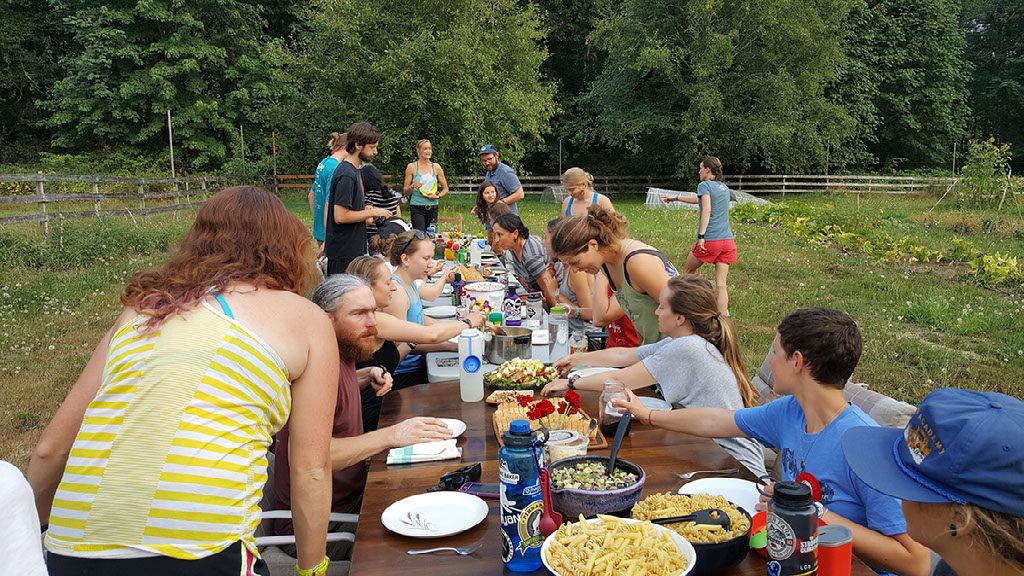
One of the great pleasures of the Confluence Community is All Cohort Day, when two cohorts engage in food, learning, and play at the terminus of one year of residency and the beginning of the next.
The North Cascades are very snowy, and Marblemount gets its fair share of snow (29 inches a year on average). This doesn’t stick around all winter, but it changes the landscape considerably during the winter.
Many birds leave the area during heavy snowfall, others arrive. During one snowfall in 2018, multiple Red-breasted Sapsuckers (Sphyrapicus ruber) showed up around the Confluence, pushed out of the surrounding hills by the harsh weather. Woodpeckers are one of the few species that can stick around during especially cold weather, because they are able to find food regardless of snow cover. Bald Eagles (Haliaeetus leucocephalus) and Common Raven (Corvus corax) are heard along the Skagit in winter, often there to feed on salmon runs. Many songbirds leave completely during the winter. Some migrate to Mexico and Central America, like tanagers and warblers. Others like Varied Thrushes (Ixoreus naevius) merely migrate down valley to a lower, milder climate.
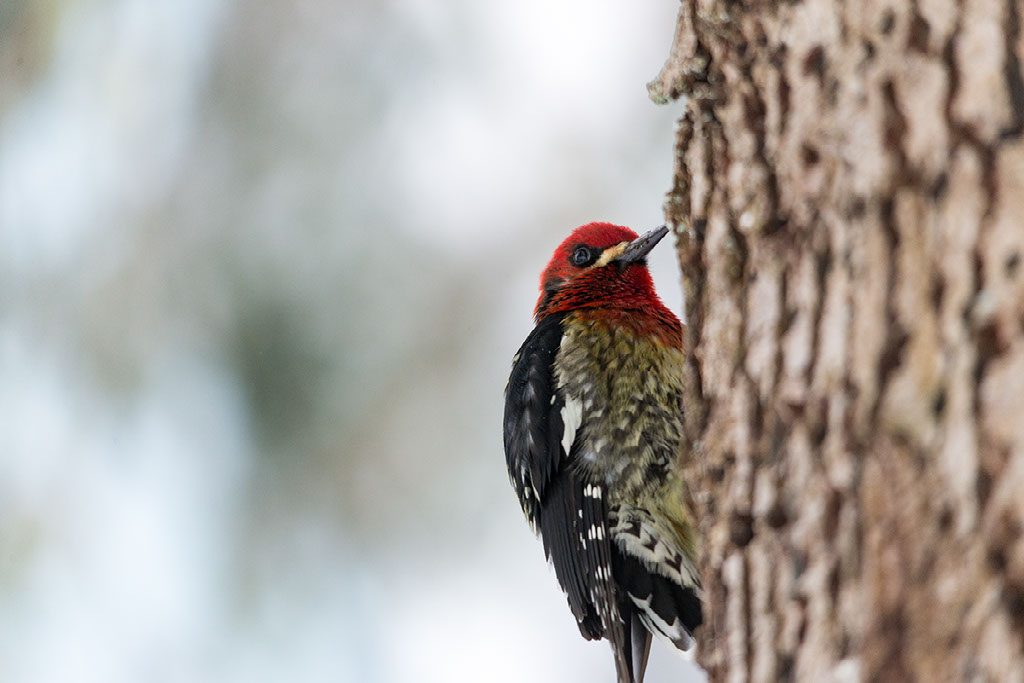
A Red-breasted Sapsucker on a tree right outside the door of the Blue House.
Most small mammals slow down or retreat to a nice burrow. Some move about in the subnivean, the space between snow and the ground in winter. When snow thaws, we can see the subnivean runs of species like Townsend’s Voles (Microtus townsendii) in the matted grass. A Bobcat (Lynx rufus) was seen in the winter of 2017/18, as were multiple Coyotes (Canis latrans), which presumably live off these rodents and possibly Snowshoe Hares on surrounding mountains.
The Confluence is within the floodplain, and while there are conifers on the property and on surrounding hills, the dominant canopy cover is deciduous. Black Cottonwood (Populus tricocarpa), Red Alder (Alnus rubra), and Bigleaf Maple (Acer macrophyllum) are the most common trees along the shore of the Skagit making the forest much brighter and open during the winter. The understory is mostly composed of Indian Plum (Oemleria cerasiformis), Salmonberry (Rubus spectabilis), Common Snowberry (Symphoricarpos albus), and Red Elderberry (Sambucus racemosa), all of which lose their leaves as well. The difference between the forest lining the Skagit in winter versus summer is striking.
Elevation and location make all the difference when spring finally happens. As residents at the Confluence travel back and forth to the Environmental Learning Center, they get to watch spring travel up the Skagit River. An Indian plum may be blooming with nearly fully formed leaves in late March in Marblemount, while a plant at the Learning Center might just be breaking buds.
Although blooms in the nearby alpine are more celebrated, spring flowers are happy reminders that sun will soon grace the Confluence again. Below are some images that I took during my spring at the Confluence. I used a portable light box to photograph these flowers on the plant. I incorporated this type of photography into my Curriculum Design Class project, using art and scientific inquiry as a method of engaging students in place.
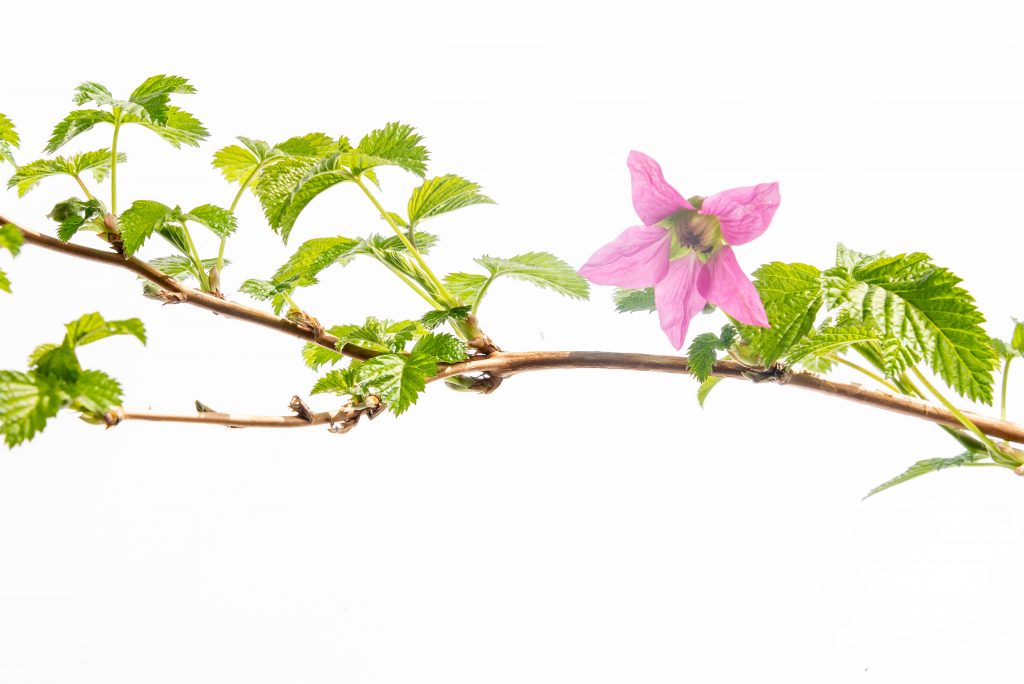
Salmonberry (Rubus spectabilis)
Birds are easy to see and hear this time of year, and are often harbingers of spring. Successive waves of migrating birds move through the valley until migration slows in June. In March there were several days when Townsend’s Solitaires (Myadestes townsendia), a migrant from Mexico, filled the valley. They were followed by waves of Varied Thrushes returning from the lowlands. Early May seemed to be all about Yellow-rumped Warblers (Setophaga coronata). Some of these birds simply move through, others show up for summer to breed.
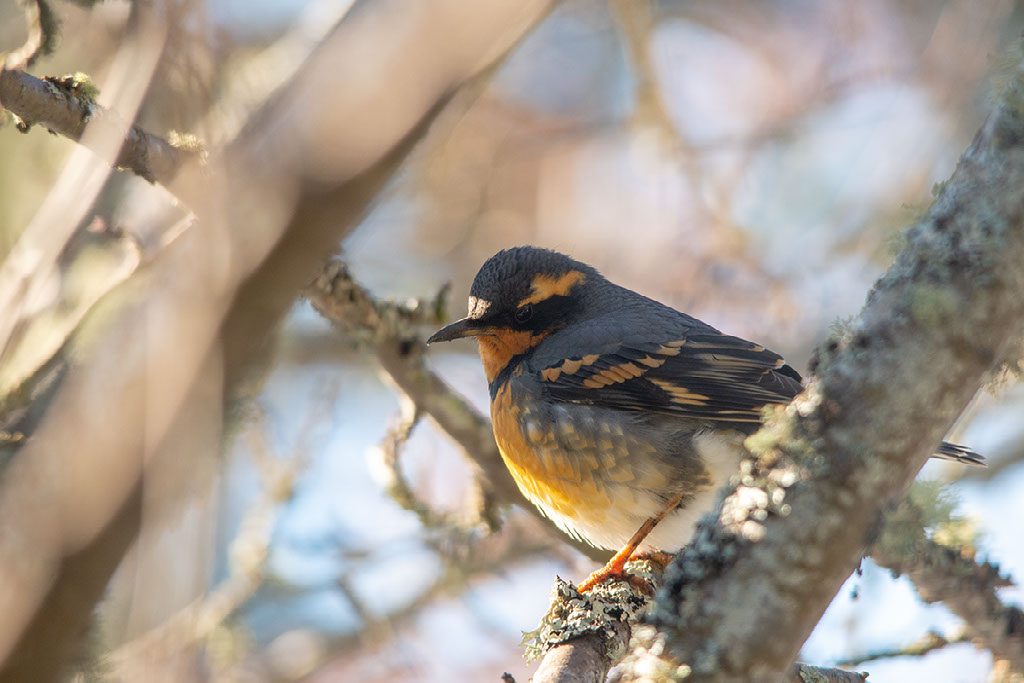
Varied Thrush move up and down the valley and are only truly gone from the confluence for a few months in the depths of winter. It’s exciting when they first arrive back in late March, announced by their thin, eerie whistles through the forest.
The river level and flow drops significantly in the summer. This makes the river safer to paddle overall, but can expose rocks that make it more challenging to navigate in certain places. Because the Skagit is fed by both snowmelt and glaciers, it stays very cold year-round. This makes a dip very refreshing, but full-on swimming hard to handle. More exposed banks also offer opportunities to see what neighbors are visiting the shoreline.
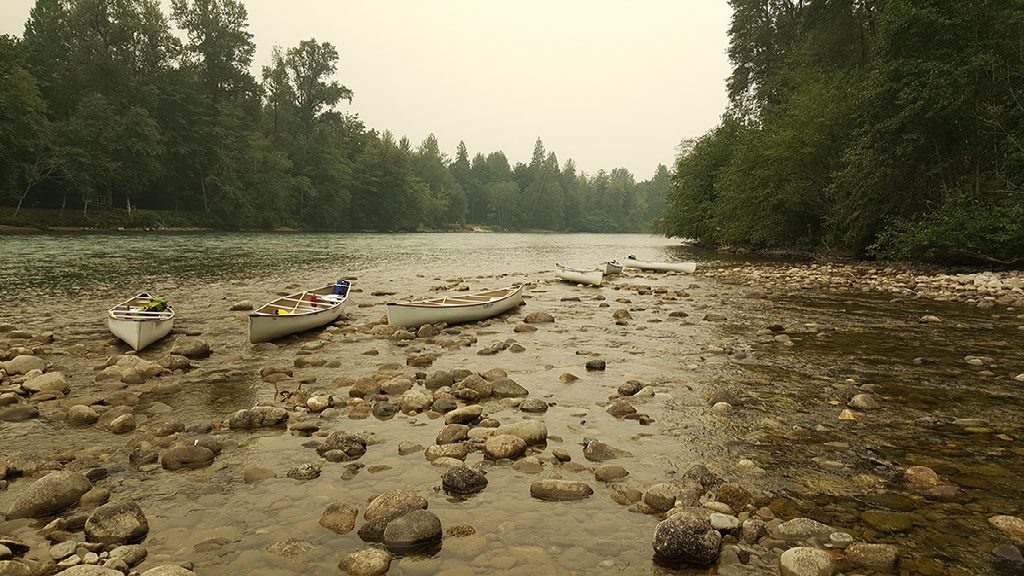
An exposed rocky shoreline in August that was completely covered by water in May.
Spending time in a special place like the Confluence leads to all sorts of discoveries. Though it can be assumed that birds singing around the property breed there, the evidence isn’t always as obvious as finding nests with young. In the summer of 2018, Vaux’s Swifts (Chaetura vauxi) nested in the old chimney of the Blue House. As the youngsters grew in size, they were audible through the walls of the house!
The Skagit River is fortunate to have all 5 species of salmon that inhabit the Pacific Northwest. During the fall and into winter, the confluence of the Skagit River and Diobsud creek is busy with activity, both from salmon and those who show up to eat them. Pink Salmon (Oncorhynchus gorbuscha) and Chinook Salmon (Oncorhynchus tshawytscha), as well as Steelhead Trout (Oncorhynchus mykiss) all used the creek and the eddy it forms in the Skagit to dig redds for their eggs. The fall of 2017 saw a large amount of Pink Salmon spawning and dying along the shores of the property. This brought lots of other animals including bears, coyotes, and plenty of birds, many of which were captured in images on a game camera set along the shore of Diobsud. One day in early October I counted 95 salmon carcasses just on shore with dozens of gulls, crows, and thirty American Dippers (Cinclus mexicanus) eating the remains!
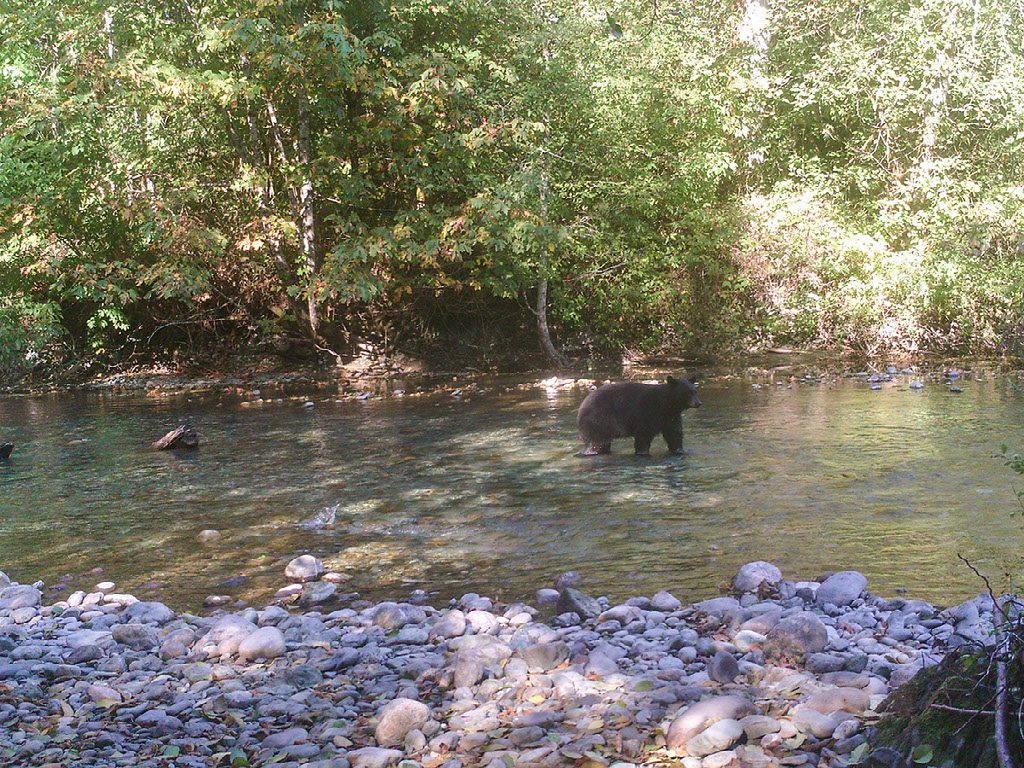
Black Bear doing some early morning fishing. Only moments later, the camera picked up a fisheries biologist walking by, and only a few minutes later the bear reappeared to fish!
The Confluence doesn’t get the fall colors of the nearby alpine does. But between Bigleaf Maples, Black Cottonwoods, and Red Alders, fall can still be very yellow.
Learn more about the natural wonders of the North Cascades ecosystem by booking a Base Camp Learning & Lodging experience, Family Getaway, art class, yoga retreat and more at the North Cascades Environmental Learning Center on Diablo Lake. Find your route at www.ncascades.org/get_outside.